If you’ve landed here you are either thinking about a bottom bracket upgrade, trying to diagnose a pesky squeak/tick/creak coming from ‘down there’ or perhaps you’re a brave soul venturing into the world of bottom bracket maintenance. Of course, it is also possible you landed here by accident, and we just scared you straight!
It seems straightforward – insert bottom bracket in frame – and it is, until you discover the labyrinth of bottom bracket standards, spindle diameters, and the sheer fear factor of messing around with an integral part of your carbon frame. But we’re not here to scare you – quite the opposite, we’re here to empower you to take matters into your own hands and the everlasting quiet that will follow.
The bottom bracket is a fundamental component of every bicycle and plays a pivotal role in ensuring smooth pedal action. It connects the cranks to your trusty steed and allows them to revolve freely. This comprehensive guide will shed light on all the various standards, their compatibility, advantages, and disadvantages, providing a deep dive into the world of bottom brackets.
Okay, let’s start from the beginning. The bottom bracket is the part that goes through the bottom part of the frame, known as the bottom bracket shell, and connects the crankset to the bike. Without the bottom bracket, there would be nothing to support the crank arms and the arms would not turn. It’s an unheralded, but integral part of your bike’s drivetrain. Most bottom brackets include bearings and a spindle to allow for rotation, but there are different approaches for how the unit is connected to the frame.
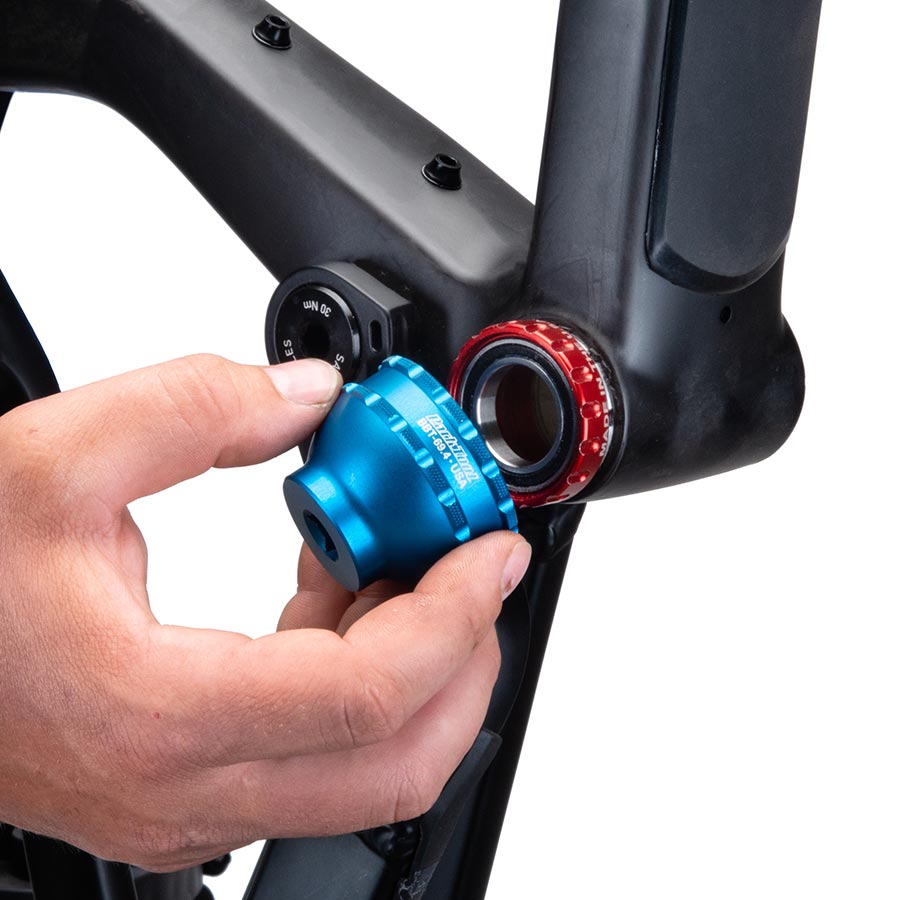
Historically, when most bikes were made from some sort of metal, bottom brackets were a threaded design that would thread into the frame and would contain a spindle and bearings to allow for rotation. Over the years, the placement of the bearings outboard vs. inboard to the frame and the size and shape of the spindle have been innovated with various claims on longevity, stiffness, and serviceability.
The two primary types of bottom brackets used today are "threaded" bottom brackets and "press fit" bottom brackets.
Threaded bottom brackets are common and easy to install or remove. As you might have guessed, they involve threading the bottom bracket directly into the frame. The most prevalent standard in this category is the BSA, also known as the English (ENG) standard or ISO. The non-drive side in this standard has a right-hand threading, while the drive side has a left-hand threading.
The T47 standard is a relatively new addition to the range of threaded bottom bracket standards. It stands out for its unique design, which includes an adapter with a 47mm diameter. This adapter houses the bearings that facilitate the rotation of the crank spindle. The innovative design combines the advantages of larger-diameter press-fit axles with the reliability and simplicity of a threaded bottom bracket, making it a popular choice for many manufacturers and ultimately many of us. It offers improved stiffness, more efficient power transfer, and easier maintenance compared to other standards.
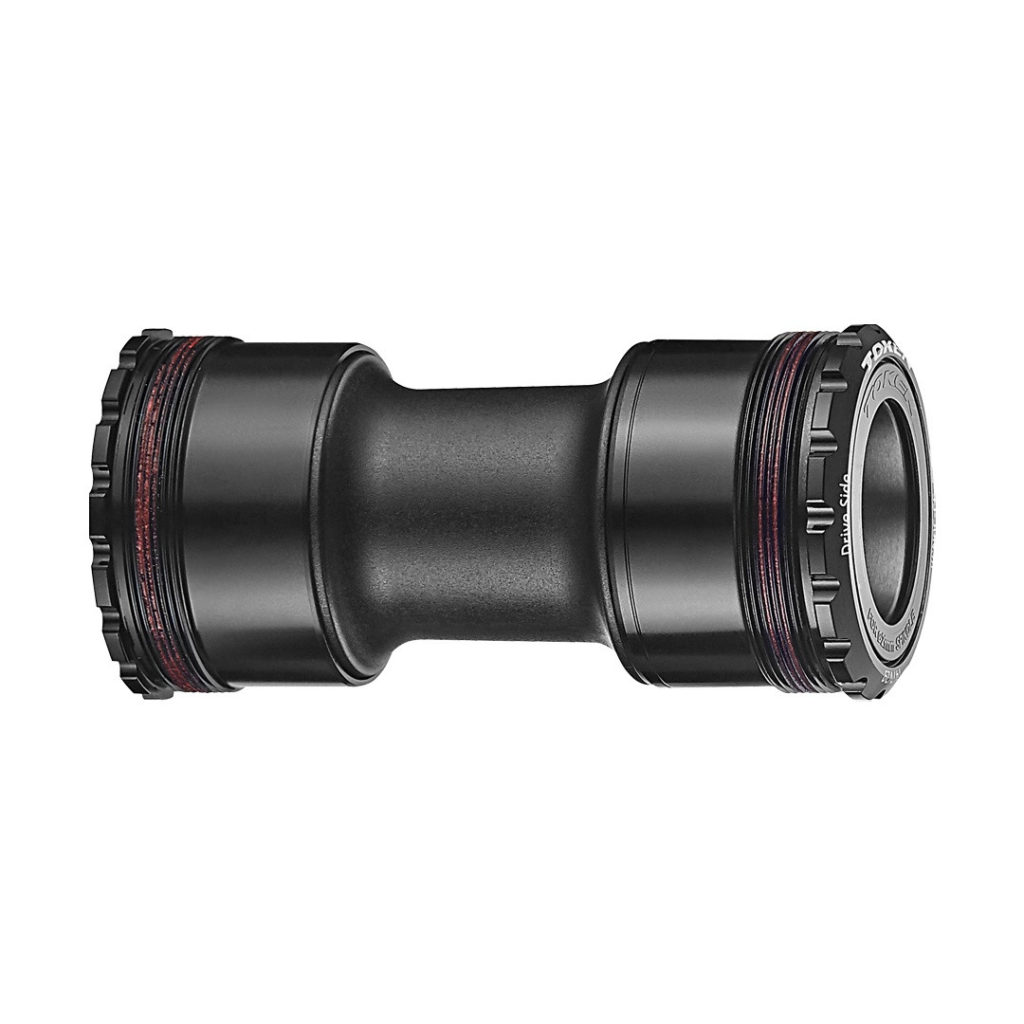
Token T47 Threaded Bottom Bracket
Press fit bottom brackets, on the other hand, are held in place by pressure and friction. The bearings can either use exterior cups or affix inside a bike frame. However, press fit bottom brackets require precise manufacturing to prevent any unwanted movement, which could lead to squeaking. They are also relatively harder to install or remove, requiring specific tools and knowledge.
There are numerous designs with confusing variations under the press-fit category. The most common are PF41 (also known as BB86, BB89.5, BB92, BB107, BB121, BB132, PF24, and Shimano Press-Fit), PF42 (also known as BB30, BB30A, BB30AI, and BBright Direct Fit), and PF46 (also known as PF30, PF30A, PF30AI, BB386EVO, OSBB, and BBright Press Fit).
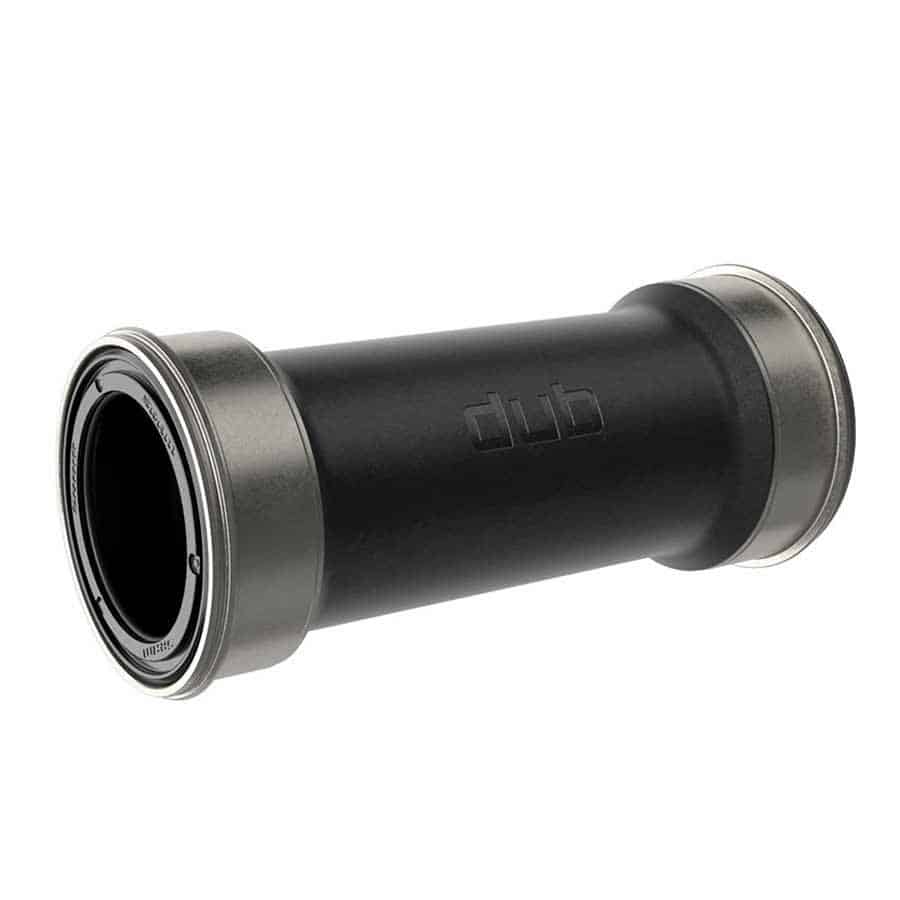
SRAM DUB Press Fit Bottom Bracket
Understanding the different bottom bracket standards can be a daunting task due to the various names (far too often used interchangeably) and dimensions. Ultimately, the bottom bracket that you need is determined by both the type of frame and the type of crank on your bike.
To decide on the appropriate bottom bracket for your bike, you must determine your frame's width, as bottom brackets come in various sizes and the width can promptly rule out certain bottom brackets. With modern bikes, it's generally most straightforward to check the manufacturer's specifications directly rather than measuring, which requires specialized instruments.
Below is a detailed breakdown of the most common bottom bracket frame types, aiming to provide a clearer understanding.
Among the most prevalent standards in the world of cycling today are conventional threaded bottom brackets (or English standard with 68mm wide shell for road and 73mm for mountain bike). BSA bottom brackets are not only ubiquitous but also user-friendly, allowing for easy servicing even in the comfort of your own home (if you're so inclined - bottom bracket maintenance isn't for everyone). The general availability of this standard has opened up a vast array of options when it comes to parts and accessories.
In early days the BSA bottom bracket featured internal threaded bearings and an integrated spindle. This meant the configuration and measurements needed to be exact as the crank arms were attached to the spindle. Originally, the spindle featured a square taper for attachment of the crank arms, but Shimano later launched the Octalink splined bottom bracket with a larger and stiffer spindle to improve contact surface for better power transfer. The Octalink splined bottom bracket was answered by the International Spline Interface Standard (ISIS), which was used by a number of smaller manufacturers. The square taper bottom bracket still exists, but has lost ground to more modern innovations.
Moving from threaded internal bearings to external bearings Shimano launched the Hollowtech bottom bracket in 2003 and it was a gamechanger. With the bearings moved external to the frame, larger bearings could be utilized for smoother operation. The standard is even making a comeback as some manufacturers are shying away from press fit and returning to threaded styles due to various issues that can arise with some press-fit standards.
Similar to Shimano, many manufacturers embraced the external bearing threaded design including Campagnolo Ultratorque and Powertorque, FSA MegaExo, and Race Face X-Type, among others.
This is a less common standard but still exists in some bikes. The Italian threaded bottom bracket has a shell inner diameter of 1.375in (34.92mm) x 24 TPI, a shell width of 70mm, and the installation can be either external or internal.
The T47 standard uses a shell with an internal thread. The frame shell may be threaded directly at the shell, or there may be an insert installed that has internal threads.
Although considered obsolete like the French threading, the Swiss Threading standard uses 35mm x 1mm pitch. However, the non-drive side uses a right-hand threading, and the drive side uses a left-hand threading whereas the French is right-handed on both sides.
This proprietary standard was introduced by Trek in 2007. The bearings are pressed directly into the frame, creating more space for larger tubes and the increased shell widths of 90mm on road bikes and 95mm on mountain bikes.
This standard is very similar to Trek's BB90/BB95 system. The bearings and their locations are identical to those of conventional threaded bottom brackets, only they're mounted in small composite cups before being pressed into the frame. The tolerances are also more forgiving than the Trek standard, which helps to eliminate some of the issues (such as creaking) experienced with early Trek bikes using this standard.
As you may have guessed the BB86 bottom bracket is 86mm (actually 86.5mm) wide and the BB92 bottom bracket for mountain bikes is 91.5mm wide. Clearly decimals don't work in naming conventions! These bottom brackets are typically used with 24mm spindles, but more recently bearings have been configured to allow for a 30mm crank spindle. Examples are the BB386 EVO and BB392 EVO.
The BB30 standard, initially introduced by Cannondale as a proprietary design, has been adopted by numerous other manufacturers. The bearing cartridges are pressed directly into a precision-fit shell, resulting in increased shell and spindle diameters, without impact to the shell width as is the case in Trek's BB90/95 system.
The primary advantages include reduced weights due to the bigger, 30mm-diameter aluminum spindle and the removal of independent bearing cups. Additionally, as the shell maintains a width of just 68mm, the cranks can be fashioned to offer increased heel clearance. Alternatively, based on the crank design, they can also facilitate a more narrow stance width, often known as the Q factor.
Cannondale has more recently introduced an iteration of BB30, named BB30A, characterized by a shell that's 5mm wider than its predecessor. The BB30A's standout feature is its uneven layout which extends the additional width to the non-drive side only. Cannondale claims that this feature allows for the expansion of bearing spacing and enhanced spindle support, thereby improving bearing durability.
The rest of the critical dimensions, such as the bearing outer diameter and thickness, remain consistent. However, the added 5mm can pose complications for crank compatibility. BB30-compatible cranks with axle spacers on the non-drive side, like those from Cannondale and SRAM, will function adequately as the extra width can be accommodated by removing spacers. However, if you have a BB30 crank that lacks these spacers, like those from FSA and Specialized, you won't be able to make it work.
The PF30 standard was developed by SRAM to address BB30's stringent dimensional tolerances and associated manufacturing costs. The bearings and bearing locations are identical, but with the addition of intermediary composite cups (bearing cups) that allow for looser frame tolerances. This makes the bike manufacturing process much less costly as there is a lower reject rate.
The PF30A is to the PF30 bottom bracket what the BB30A is to the BB30 bottom bracket. The BB shell is 5mm wider with all of the extra width on the non-drive side, creating an asymmetric system. It retains the improved tolerances of the PF30 BB shell.
BBRight is a hybrid of conventional threaded, BB90, and PF86 bottom brackets, where it is compatible with 30mm crank spindles and PF30 bottom bracket cups, while pushing the non-drive side bearing out by 11mm. This allows for wider frame tubes connecting to the bottom bracket shell. The chainstay can be nearly double the width at the junction with the bottom bracket, significantly increasing stiffness and power transfer, while producing marginal weight savings in frame design.
BBRight comes in two versions: the direct fit version uses the same 6806 bearings from a BB30 bottom bracket, pressed directly into the frame, and the press fit version uses removable bottom bracket cups, similar to PF30. It's used on most Cervélo and some 3T frame designs.
As mentioned, it is crucial to ensure your bottom bracket is compatible with both your frame and selected crankset. The axle, or spindle, which traverses your frame can come in various dimensions and arrangements, and knowing what type it is will be necessary to select the correct bottom bracket. We breakdown the main types below so you know what you're looking for. And again, sometimes this is as easy as looking up the specs for your bike, but cranksets are a little more interchangeable so make sure you verify.
A Hollowtech II bottom crankset features an external diameter of 24 millimeters that spans the full spindle length. This measure, widely accepted and used by multiple brands, has the broadest frame compatibility in the market. Since Shimano was the originator of the Hollowtech bottom bracket, any contemporary Shimano crankset will have a 24mm diameter.
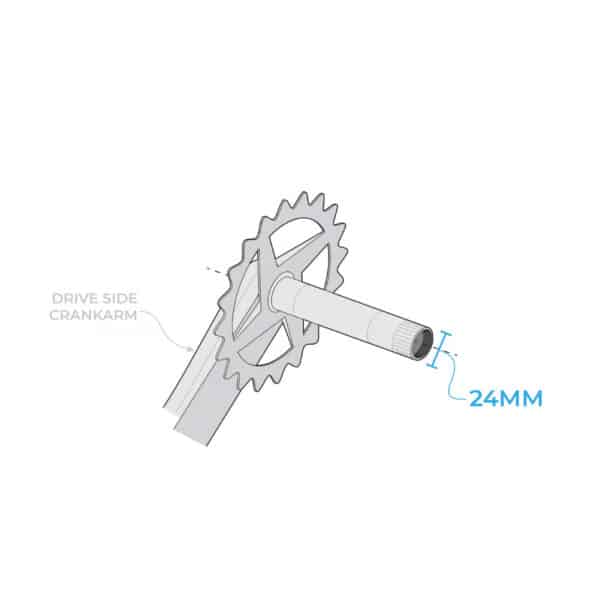
Shimano Hollowtech Crank Spindle Credit: BBB
GXP (or Giga X Pipe) cranks were pioneered by Truvativ, which was later acquired by SRAM. Identifying a GXP crank axle is fairly straightforward. The drive side of the axle boasts a diameter of 24 millimeters, identical to the Hollowtech II, but it tapers down to 22 millimeters on the non-drive side. This design "clamps" the whole crankset onto the left bearing within the frame, eliminating any potential side play. As a result, there's typically no need for spacers.
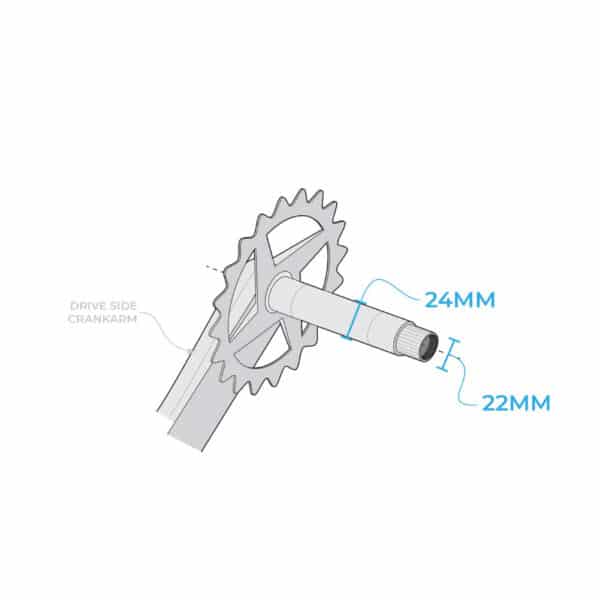
SRAM GXP Crank Spindle Credit BBB
Cranksets that are 30 mm typically feature a more rigid spindle, despite their aluminum construction as opposed to steel. This results in a marginally lighter spindle. A 30mm external diameter signifies the presence of a PF30/BB30 spindle. Another identifying feature is that the PF30/BB30 spindle usually connects to the non-drive side. This implies that when you disassemble everything, the axle isn't affixed to the chain's side, but rather to the alternate crank.

BB30 Crank Spindle Credit BBB
The DUB axle aims to offer the perfect balance between a broader frame compatibility and the rigidity provided by the oversized 30 mm spindles. Its exterior diameter is exact at 28.99 millimeters, but generally rounded to 29 millimeters. The spindle bears the name DUB for easy identification. Furthermore, a distinctive feature of the DUB spindle is that it is always connected to the non-drive side. This implies that when disassembled, the axle is not linked to the side where the chain is located, but rather to the opposite crank.
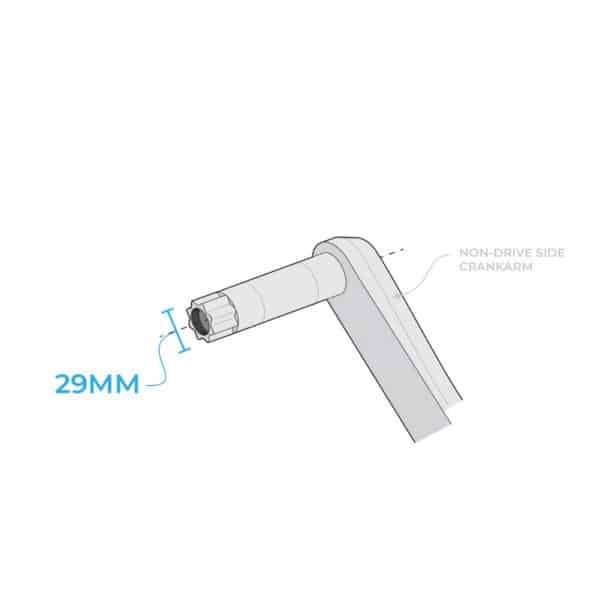
SRAM DUB Crank Spindle Credit BBB
Perhaps you've noticed that there are a few options on the market and prices of bottom brackets can swing pretty wildly (can't everything in cycling?). Once you've determined your bottom bracket standard, you still have some choices to make regarding materials used in your setup. The most important of which is the type of bearings that you use, which comes down to two high level options: steel or ceramic.
Steel bearings are the traditional choice for bottom brackets and are known for their durability and affordability. They are typically made of high-quality stainless steel to resist corrosion and wear and can withstand high pressure and harsh conditions, making them a solid all-round choice for the majority of cyclists out there. They're also generally going to be less expensive than ceramic alternatives.
Despite solid durability, steel bearings are not without their flaws. They are heavier than ceramic bearings, which can be a disadvantage for competitive cyclists looking to reduce weight (every last gram!). Additionally, steel bearings may not spin as smoothly as ceramic bearings, leading to less efficient power transfer.
Ceramic bearings, on the other hand, are a relatively new addition to the cycling world. They are made from ceramic silicon nitride (Si3N4), which is harder and smoother than steel. As mentioned, ceramic bearings are lighter than steel, which can contribute to overall weight reduction of the bike. Additionally, their smoothness leads to less friction, potentially increasing cycling efficiency and speed. Ceramic bearings won't rust, making them a suitable choice for cyclists who frequently ride in wet conditions.
CeramicSpeed even offer special coated ceramic bearings which add a metallic coating to the balls to harden the races for added longevity and further reduced friction. If taking the plunge and purchasing ceramic, we recommend going for the coated option to squeeze out marginally more gains and extend the life of your investment.
So ceramic bearings last longer, reduce friction, and can be ridden in all conditions - what's not to love? Mainly the price tag, which is typically multiples of what you see in the steel bearing market. Moreover, while they are hard and smooth, ceramic bearings can be brittle and susceptible to shock damage.
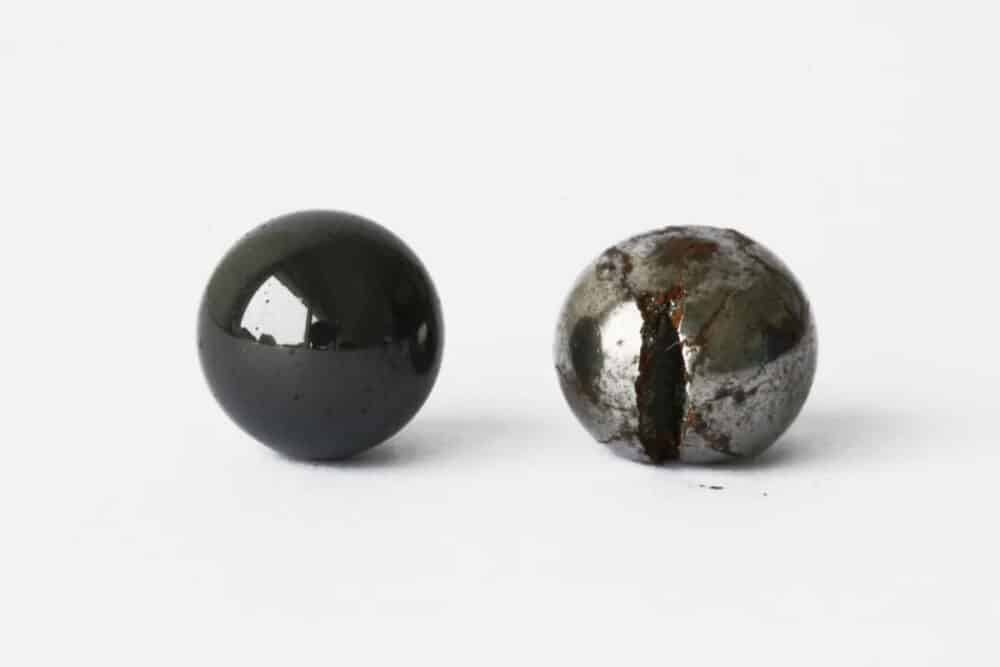
CeramicSpeed comparison of ceramic (left) to steel bearing under the same high pressure
The answer to this question largely depends on your needs and budget. If durability and affordability are top priorities, then steel bearings may be the better choice. However, if performance and speed are more important (we're talking every second counts), then the smoother, lighter ceramic bearings might be worth the investment.
Whether you choose steel or ceramic bearings for your bottom bracket, remember that regular maintenance is key to prolonging their lifespan and ensuring optimal performance. Always clean and lubricate your bearings regularly, and replace them when they show signs of wear. Ceramic bearings typically make use of lighter grease (because they can and it reduces friction), but they do need to be serviced. With proper care, both steel and ceramic bearings can serve you well on your cycling adventures.
The installation process differs between threaded and press-fit bottom brackets. Threaded bottom brackets require a special bottom bracket tool for installation and removal. Unfortunately, they are not common across all bottom brackets, but they are affordable and bottom bracket work can be completed by a home mechanic.
On the other hand, press fit bottom brackets require the even more specialized bearing press, for which there are home versions available, but we urge caution as pressing the bearings in incorrectly could permanently damage your frame. If you go this route, Park Tool has created some great YouTube videos to assist you in the process.
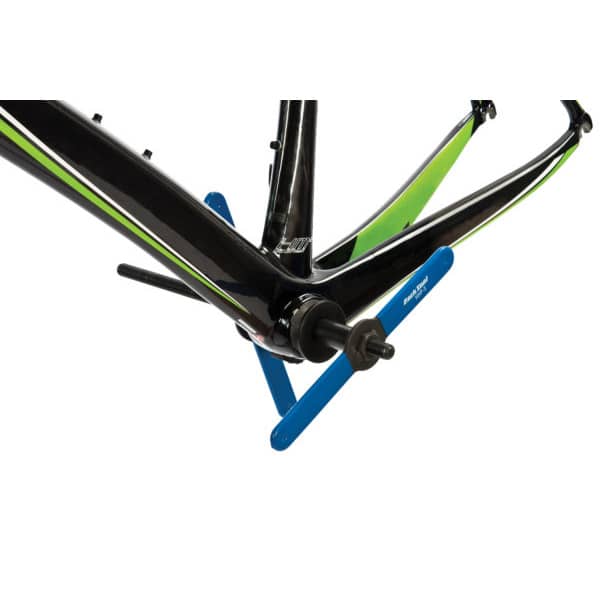
Park Tool HHP-3 Home Mechanic Bearing Press
A more recent innovation is the thread-together bottom bracket, which is a spin on press fit bottom brackets where the two sides of the bottom bracket thread together in the centre. The theory here is that the extra stability afforded by locking the two sides together can prevent the creaking issues commonly found in certain types of press fit bottom bracket designs. An added advantage of the thread-together style is the bottom bracket can be installed without a bearing press, though it does still require the appropriate bottom bracket and a torque wrench. Token and Wheels Manufacturing have thread-together options for most press fit standards.
Bottom brackets are a crucial part of your bike's performance. Although the numerous standards can make choosing the right bottom bracket a complex task, understanding each standard and its specifications can significantly simplify the process. Regardless of the standard you choose, ensure it is compatible with your bicycle, and if in doubt, consult a bicycle repair professional for guidance.
For most people, the humble bottom bracket will be nothing more than a means to an end - that part you don't see (much). But, if you're at the pointy edge of the field, there are real performance gains to be had with a ceramic bottom bracket. Yes, the gains are marginal, but in a sport where sometimes every extra couple of watts can be the difference between podium and bust, it may be worth the extra cost.
Still stuck? Reach out to us and we'd be happy to assist you in finding the right bottom bracket for your bike. And here's hoping that the industry takes steps towards tightening standards so there are less bottom bracket types to choose from in the future.
Happy riding!
